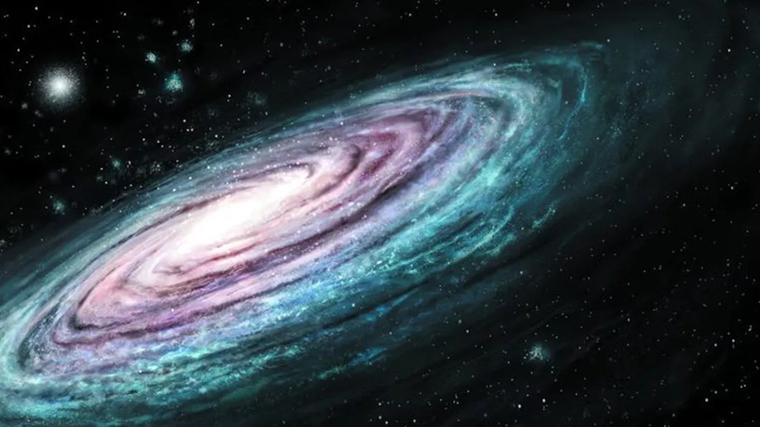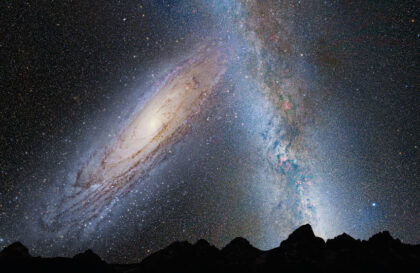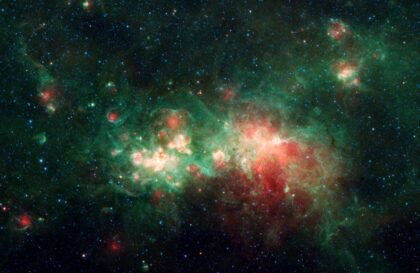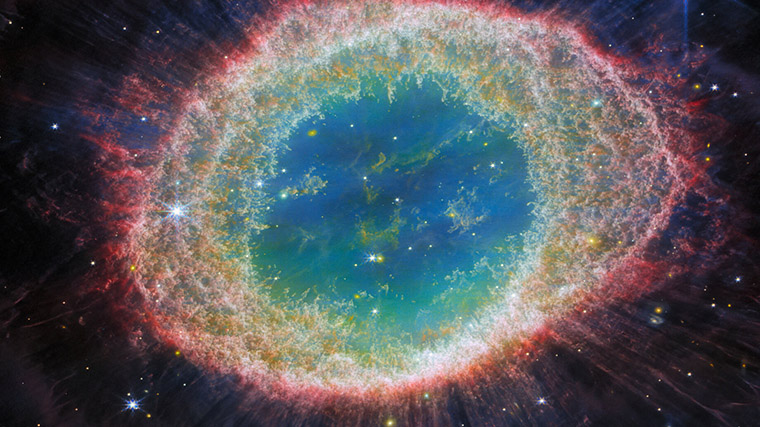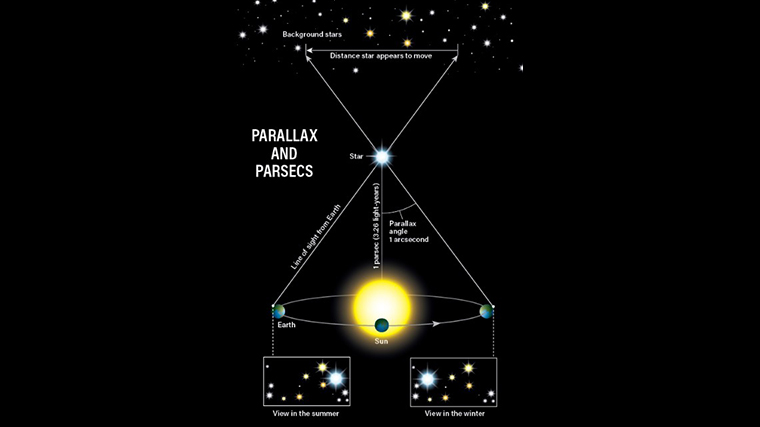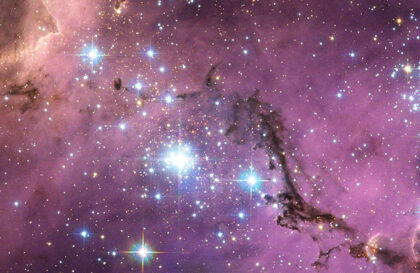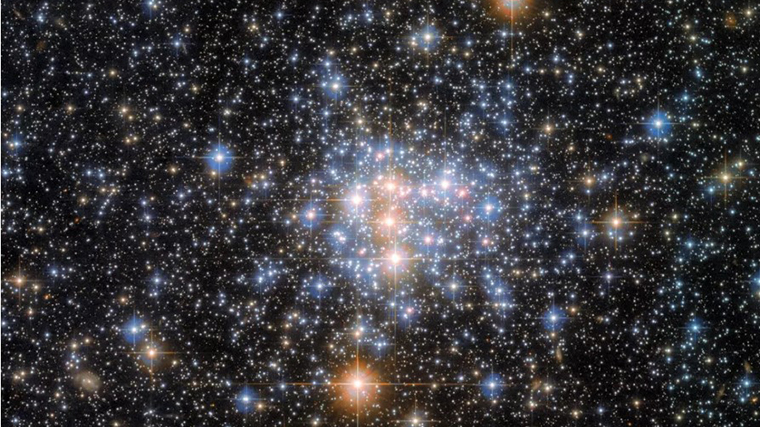Even if you are stationary, the Earth moves at 30 km/s, the Sun at 220 km/s. In space, everything moves towards the gravitational center – the Great Attractor.
Galaxies are united by gravity into structures, that collide and grow, turning into walls. And another force – the Hubble flow – increases the distance between them because the Universe is expanding. Gravitational structures are connected by gravitational threads.
Over the past 30 years, a 3D model of the Universe has been built. Described incrementally: our Local Group, Virgo Supercluster, Laniakea. In the center of Laniakea is the Great Attractor, which keeps everything within a radius of 0.5 billion light years. The bad thing is that it is closed from us by the plane of the disk of the Milky Way, i.e. located in the so-called zone of avoidance. In 100 million years we will be on the other side of the disk and will be able to see everything.
The first signs of the Attractor
The first signs of the Attractor were discovered in the 70s. X-ray telescopes peered through the disk and found a supercluster of galaxies there. This is one of the reasons why our galaxy is drawn there.

The second reason is the flow of dark matter, which carries away the galaxies, resisting the expansion of the universe. More recent studies have found another 200 superclusters of galaxies at the site of the Great Attractor and refined the mass. It turned out that all this was not enough for us to move at such a speed. She’s big.
Far beyond the Great Attractor, the Caesar telescope discovered the Shapley Supercluster. It has been studied enough to date. In the center is a dense region of galaxies – the Shapley Attractor, even more massive than the Great Attractor by almost 4 times. It is believed that the Shapley Attractor contributes to the movement of the Milky Way. The Great Attractor is attracted to the Shapley Attractor.
But in 2016, the same team that found Shapley found an even more powerful Vela cluster behind it. And that was the last piece of the puzzle of the strange speed of the Milky Way. Vela adds 50 km/s to us.
Will these superclusters swallow us up?
Scientists think not. The universe is expanding faster than Shapley and Vela are pulling us towards it.
Our galaxy is rushing through space like a rotating disk at a speed of 2.2 million km/h = 631 ± 20 km/s. Velocity is relative to the cosmic microwave background (CMB) (an analogy, a ship relative to the surface of the ocean).
The Local Group of galaxies is moving with us relative to the cosmic microwave background (CMB) at a speed of 631 ± 20 km/s.
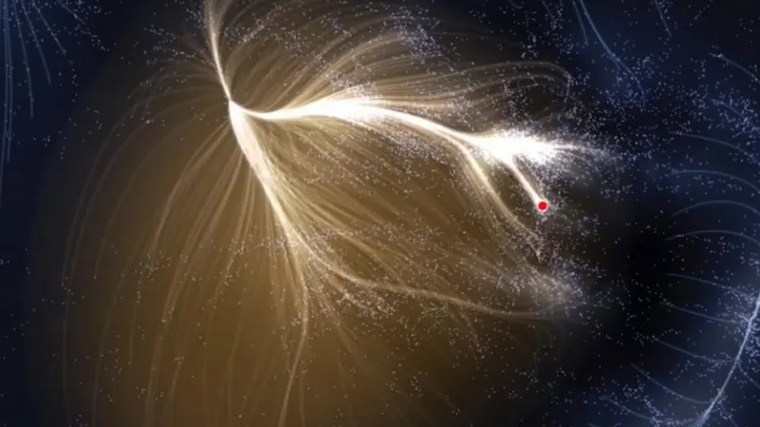
Shapley Supercluster
The researchers tried to find the object or objects that determine this movement (we are talking about the so-called peculiar velocities of galaxies). The Milky Way may be attracted to one or more superclusters, each containing tens of thousands of galaxies.
Previous studies have suggested that the motion of our Galaxy is determined by the interaction with the most massive object in the surrounding part of the Universe. This Shapley supercluster in the constellation Centaurus (centered on Abell 3558) is 400 million light-years from Earth and spans 20 million light-years. And it has been well studied.
The Shapley Supercluster is very close to the direction in which the Local Group of galaxies (including ours) is moving relative to the cosmic microwave background (CMB). Close, but not exactly. There is something else.
Great Attractor
A new map of the Universe has revealed a nearby and less massive supercluster called the Great Attractor, whose existence has been suspected since 1986. Our entire local group of galaxies, including the Andromeda Nebula, Triangulum, and others, is moving there at a speed of 491 +/- 200 km / s. It turned out that the Great Attractor is not just a speculative equilibrium point of applied forces, but a real independent supercluster, not directly related to the Shapley supercluster.
Observation of the Great Attractor is difficult. It is hidden from us by the arm of the Milky Way. We look at it through the disk of the Milky Way. In 100 million years, the solar system will be on the other side of the disk and we will be able to see the bright cluster of stars of the Great Attractor in the visible range.
However, the Great Attractor still does not fully explain the direction and speed of the Milky Way. Either the data are incomplete or a significant influence is exerted by invisible clusters of dark matter, the center of gravity of which does not coincide with the center of gravity of the local supercluster. Still missing 50 km/s.
Where to find another 50 km / s?
In 2017, it was suggested that the movement towards attractors, like the attractor of the Shapley supercluster, creates a relative movement from rarefied areas to denser ones, which can be visualized as a virtual repeller – repeller, repulsor. It is believed to be a large supervoid. The nearest large area of low density to us has been marked by the Dipole Repeller and is just opposite the Shapley Super Cluster. That is, Shapley pulls towards him, and the Dipole Repeller pushes towards Shapley.
An even more confusing picture is the Hubble flow – the expansion of the Universe. The galaxies should move away from each other, scatter, and not reach for some kind of center.
The answer, as in the case of the Great Attractor, was found by the team of Rene Kraan Korteweg, analyzing images in the X-ray range.
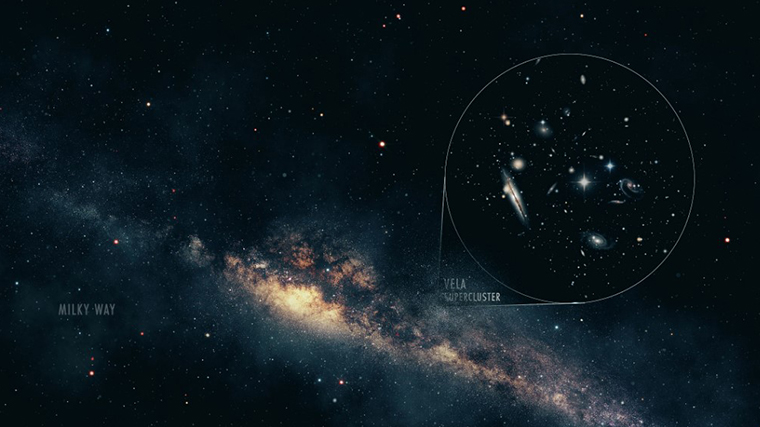
Behind the Shapley cluster, there is an even more powerful gravitational force – the Vela supercluster, which went unnoticed for the same reason as the Great Attractor. He was hiding behind our galactic disk.
This is the Vela supercluster. Consists of two walls approximately 385 million and 300 million light-years wide. Its distance is 870 million light years.
Scientists have not yet weighed it. But according to their estimates, it is it that contributes the missing 50 km / s (180,000 km / h) to the movement of our galaxy.
